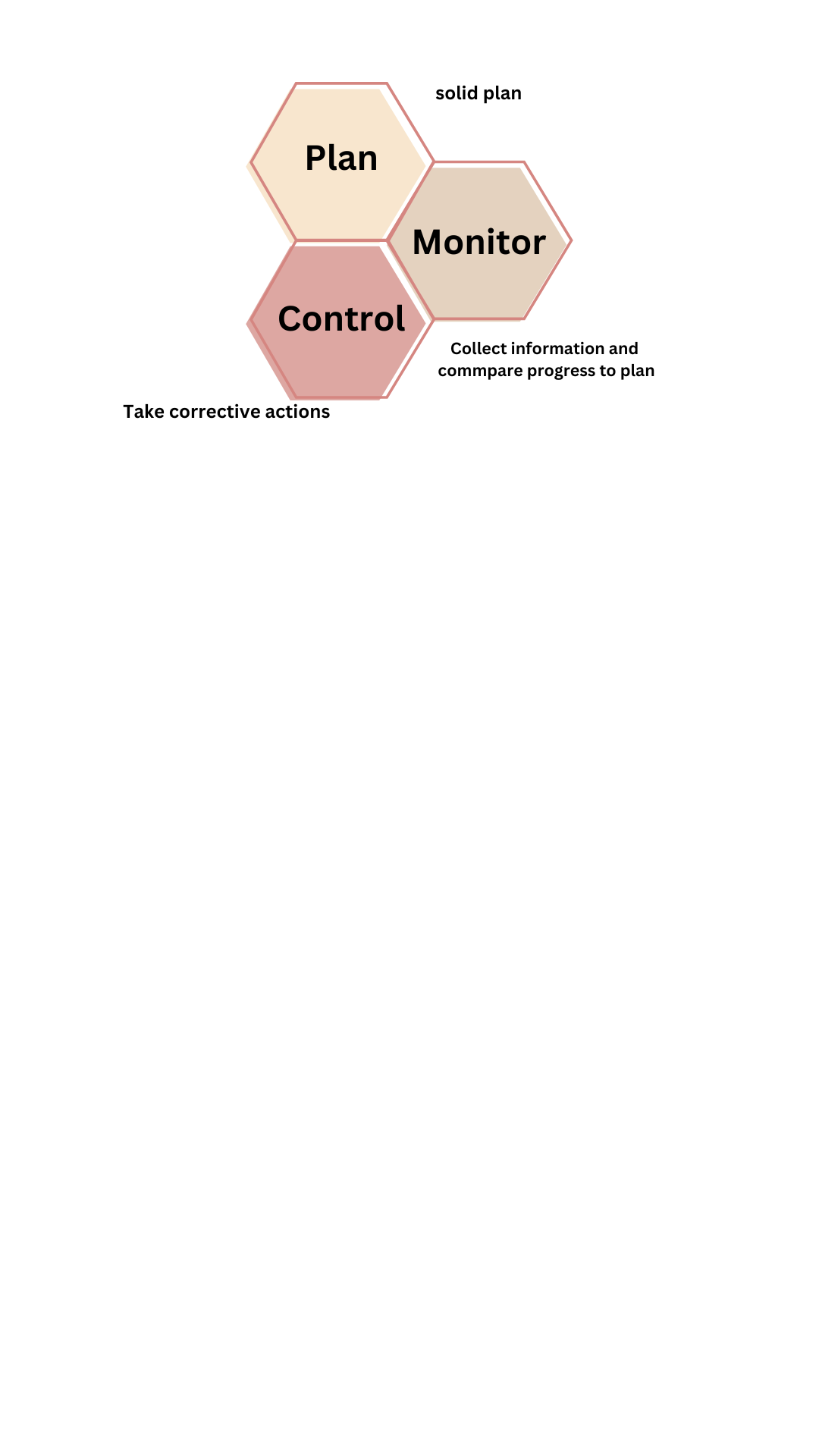Planning, Monitoring and Control cycle
The Planning, Monitoring, and Control cycle is a project management framework that involves four key stages: Planning, Executing, Monitoring and Controlling, and Closing. These stages are iterative and involve continuous feedback and improvement throughout the project.
Planning: The first stage of the cycle is planning. This involves defining the project goals and objectives, developing a detailed project plan, identifying project risks, estimating resources, and establishing a project schedule.
Executing: The executing stage involves implementing the project plan, including the allocation of resources, the completion of project tasks, and the management of project stakeholders.
Monitoring and Controlling: During the monitoring and controlling stage, project managers track project progress against the plan, identify any deviations from the plan, and take corrective actions to keep the project on track. This involves monitoring project performance, managing project risks, and adjusting the project plan as needed.
Closing: The final stage of the cycle is closing. This involves completing all project deliverables, obtaining approvals from stakeholders, and closing out contracts. Project managers will also conduct a project review to evaluate the success of the project, identify any lessons learned, and document best practices for future projects.
The Planning, Monitoring, and Control cycle is a continuous process, and the feedback from each stage is used to improve the project plan and execution for future cycles. It is essential for project managers to maintain clear communication with all stakeholders throughout the cycle to ensure that everyone is aligned on project goals, timelines, and budgets. By following this cycle, project managers can increase the chances of successfully completing projects on time, within budget, and to the satisfaction of all stakeholders

Tracking through Ghantt chart
Gantt charts are a popular tool used in project management to track project progress and visualize the project schedule. A Gantt chart is a horizontal bar chart that shows the start and end dates of project tasks or activities.
To track project progress through a Gantt chart, project managers need to follow these steps:
Create a Gantt Chart: The first step is to create a Gantt chart that shows all the project tasks, their start and end dates, and their dependencies.
Update the Chart Regularly: Once the Gantt chart is created, project managers need to update it regularly to track project progress. They need to mark the completion of each task, update the start and end dates for each task, and adjust the chart accordingly.
Monitor Critical Path: Project managers also need to monitor the critical path, which is the sequence of tasks that determine the project’s duration. Any delays in the critical path can cause the project to be delayed, so it’s important to monitor it closely.
Use Color Coding: To make it easy to see the status of each task, project managers can use color coding in the Gantt chart. For example, they can use green to indicate completed tasks, yellow for tasks in progress, and red for tasks that are behind schedule.
Share the Chart with Stakeholders: Finally, project managers need to share the Gantt chart with all project stakeholders, including the project team, sponsors, and customers. This helps keep everyone informed about project progress and allows them to identify any issues or delays that need to be addressed.
By tracking project progress through a Gantt chart, project managers can ensure that the project stays on schedule and that any issues or delays are identified and addressed quickly.